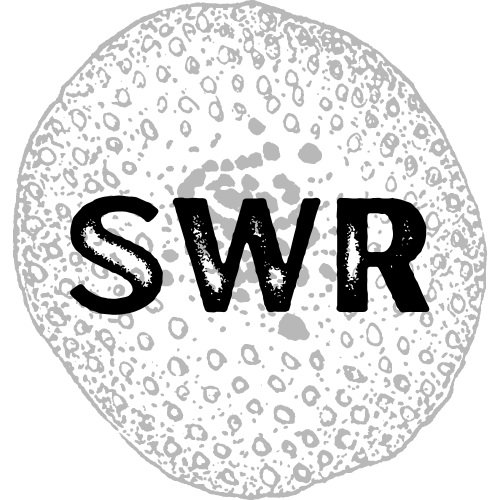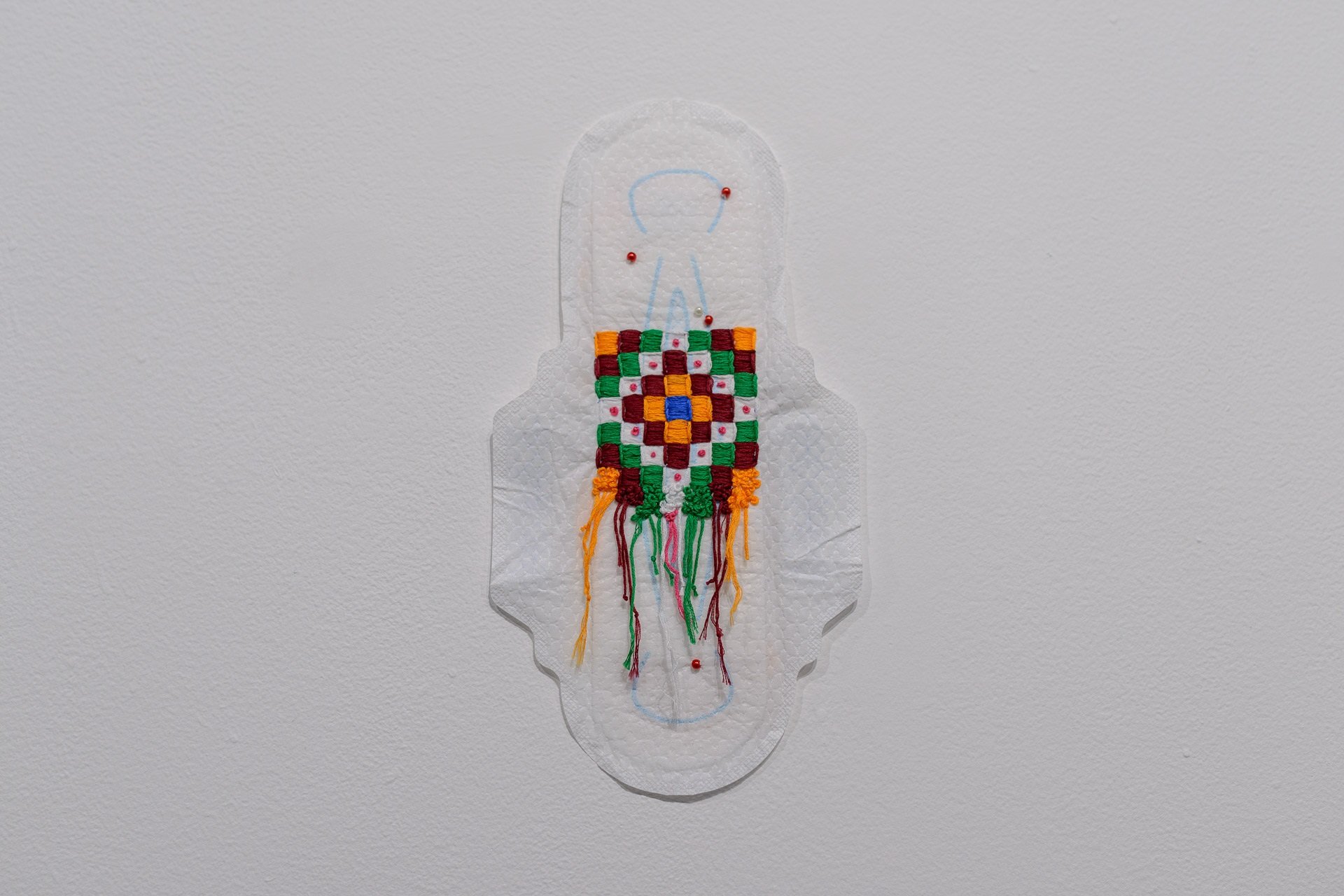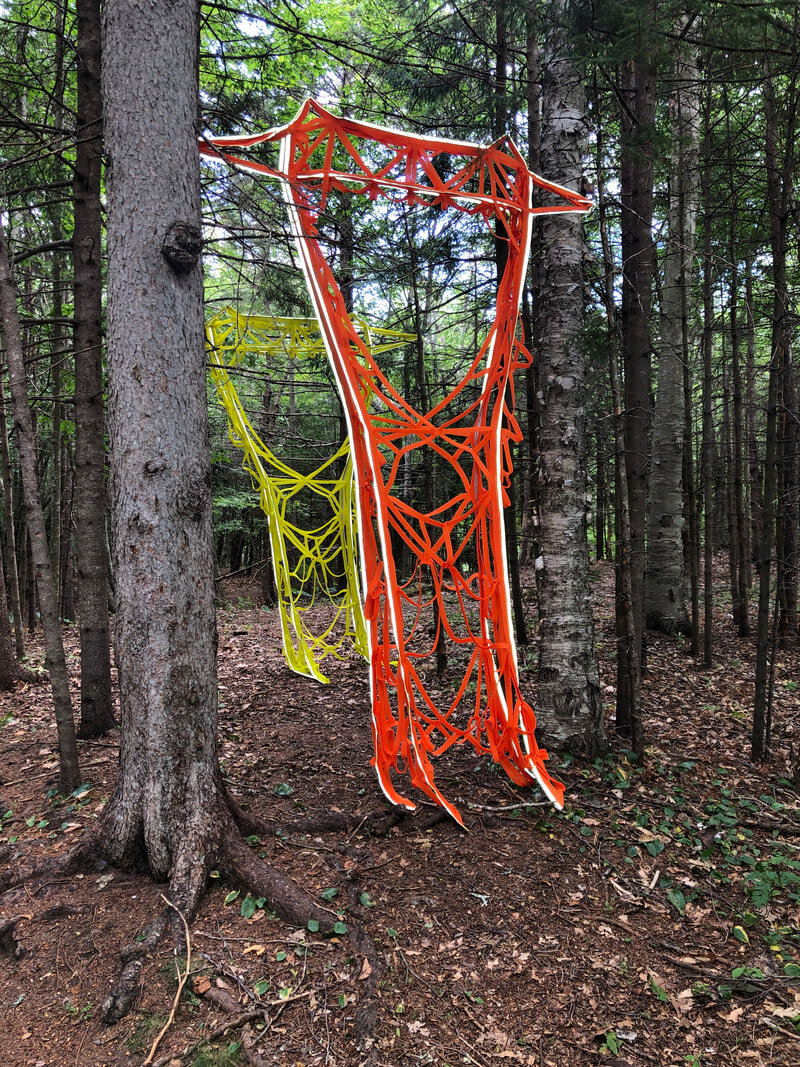I believe in the power of food: I believe in its ability to not just sustain or heal us physically, but to be an instrument of connection and liberation. Permission Cookbook is the culmination of over three years of writing, research and artmaking into how food is understood as a cultural and social tool, undertaken during my MFA at Memorial University of Newfoundland, Grenfell.
DREAMING BEYOND PLACE, BEYOND TABOO: SALLY WOLCHYN-RAAB IN CONVERSATION WITH NASIM MAKAREMI NIA
As a newcomer to Canada from Iran, Nasim Makaremi Nia has been finding a place for herself as a Newfoundland and Labrador artist.
Her work brings together painting, collage, drawing, embroidery and found objects to examine the relationship of women to their bodies within her own cultural foci. She graduated with an MSc in solid-state Physics and is currently an MFA candidate at Grenfell Campus, Memorial University of Newfoundland and Labrador
F*CK RESILIENCE, GIVE ME JOY
The first day of our in-person meeting, filled with hugs and communion, set the tone for relationships founded in collaboration, generosity and support. Amidst a busy schedule of technical demos, excursions and meet-and-greets, our time in our studios was couched between the informal gathering of shared meals. It was over one of these meals that we first talked about the ideal of resilience; sharing stories of trauma and strength, O’Leary loudly proclaimed “fuck resilience! I’m tired of being so resilient all the time!” That statement became her response any time the idea of resiliency came up and has since kept a question in my mind: why do we focus so much on this idea of being able to survive and thrive in spite of rather than because of?
BODIES IN SPACE: IN CONVERSATION WITH ANGELA HENDERSON AND MELANIE COLOSIMO
Image courtesy of Melany Colosimo
There is a fundamental role that buildings and fabricated structures play in our daily lives, in the way that they demarcate ownership of spaces and invite specific use or actions through their functional design, or lack thereof. Curious about the ways in which we can imagine space for alternative means, and dive into fraught histories of urban design, I spoke with Melanie Colosimo and Angela Henderson. Both artists work closely with ideas of how humans intervene in the physical world, each offers their own formal and conceptual interpretations of intersecting and common themes surrounding bodies in space.
THE HIDDEN AND RECOVERED FIGURES OF JENN E NORTON’S SLIPSTREAM
Image courtesy of the artist
Jen E. Norton’s video installation, Slipstream is a full-body experience that begins with being guided through a near complete dark space towards flourishing figures and the deep, rumbling sounds of turbulent air. Six large monitors are positioned in a wide circle that surrounds the viewer as figures and sound whirl across them. In this work, there is no specific beginning or end point - no front or back, left or right.
MAGIC AS REMEDY: IN CONVERSATION WITH KATE MCDONALD AND EMMA PAULSON
Image courtesy of the artists
Artist and activist Kate MacDonald’s experiences growing up black in Nova Scotia shaped her into a fighter for marginalized voices: “Even since a very young age—I grew up in Halifax and being that it is a smaller city I faced some ostrisization,” she says.
“I feel like through this young narrative that I had to create for myself, the seedlings for something were already in motion.” That something was The Magic Project, an initiative with the goal of highlighting the voices of marginalized communities and challenging stereotypes through facilitating self-determined representation. “The goal is to make everyone feel like they have a voice and that they matter,” explains McDonald.
THE UNPLANNED IMAGE
For many people visual art remains an inaccessible mode of expression. As either a viewer or an artist, the form is often dense with cerebral and verbose theory, filled with coded imagery, or just plain self-indulgent. For those without education who wish to make use of the medium the technical, monetary and creative challenges often prove to great to allow for these potential artists to feel confident, or even comfortable enough, to acknowledge that their work has value above their own enjoyment of the process.
This holds true for analogue photography. While cameras themselves can be easy enough to come by, the knowledge to operate them is no longer common. Delving into contemporary analogue photography is often as much about the science behind the process, as it is about the result. But without the tools needed to grasp the mechanics of a camera, or the complexities of the traditional chemistry, this art form finds itself available to an increasingly select few.
BLOOD SPLATTERS AND FLYING DICKS: THE ODDLY SENSITIVE AND SUBTLE NATURE OF ZAC SLAMS
Image courtesy of The Bows (formerly Untitled Art Society)
At first glance there is something pleasantly and unapologetically naive about Zac Slams’ exhibition entitled CRIME AND PUNISHEDMENT at Untitled Contemporary Art’s Mainspace. The handling of the collages makes evident a kind of haphazard scrounging of materials, rapidly assembled with glue stains and bit of scotch tape peeking their way out from behind faces of porn-stars, magazine models and serial killers. Stuffed into plastic bags or cheap frames and hung at un-precise angles, askew like posters in a teenager’s bedroom, this work seems far from refined. There is no attempt at polish, precision or presentation. It is utterly indigestible.














